This time more on the engine's mechanicals and one or two other bits.
Cylinder bores should be finished with a “Flexhone” tool. This superb device that looks so simple (some people call it the Christmas Tree) provides a wonderful finish and reduces the need for running in to an absolute minimum. Piston rings should be treated this way too to provide a 45-degree cross-hatch finish.
If you are rebuilding using an un-rebored block then check the piston clearances before fitting the rings and select the pistons for the optimum clearances for each cylinder
The oil pump is another component that must be carefully checked. Maximum clearance between the rotors as specified is 0.12mm – about 0.005”. I know that the pumps work fine though even with 0.20mm (0.008”) clearance but this is not ideal. Precision rebuilt pumps are available from Huib van Guernink at http://www.viva-lancia.com/ on an exchange basis.
This is a good opportunity for me to let off a bit of steam about oil pressure, always a popular topic. So many people seem to think that the higher the pressure the better. This is nonsense. 65lbs/sq. in. or 4.4 kg/sq cm. is plenty – and it was good enough for the F1 V8 BRM… In fact the Lancia factory specification is 4.0 – 5.0 kg/sq. cm. (57 –71lbs/sq. in.) at 4500rpm and 90 degrees, with just 0.4 – 0.5 kg/sq.cm. (5.7 – 7.1 lbs/sq.in.) at idle at the same temperature; Lancia obviously agreed with BRM! Running higher pressures wastes power, wears the oil pump and heats up the oil unnecessarily. Do not rely on the standard gauge; usually these are pretty inaccurate and only suitable as a guide. Better to fit a proper mechanical gauge.
Most Fulvias are fitted with a fixed oil pressure relief valve, so no adjustment is possible without modification. It is not uncommon to find an engine with higher pressure than normal (when checked with a proper gauge of course). This can be due to someone who, having found the little oil sprayer at the front of the crankcase to be broken, has blocked up the outlet with a self-tapping screw, a good solution but one which will raise the oil pressure, especially at low engine speeds. High pressure at high engine speeds will be due either to a malfunction of the relief valve or perhaps restrictions in the system – maybe gunge collected in the crankshaft, which should of course have been cleaned out!
Cooling System
The standard Fulvia radiator is not particularly good; it is also very heavy. If a suitable aluminium replacement can be found I would suggest that it is a good idea to install it.
The thermostat is specified to allow the engine to run at 70 deg centigrade (158 F). I believe that the engine will make a little more power if run at a slightly higher temperature. I do not think that screw-in thermostats are easily found other than in the original value. One option is to fit a hose mounted unit (in the top hose of course). These are available in a variety of values; I suggest 80 – 85 deg. as being most suitable. The standard electric temperature gauge is quite accurate and may be relied upon.
S1s benefit from removal of the beautifully-made but noisy and wasteful mechanical fan. I have no figures but I would not be surprised to learn that the fan might cost as much as 2 – 3 hp at full speed. Furthermore, the action of the fan slows down the warming-up process which increases engine wear. An electric unit should be fitted, arranged to switch on at about 95 deg.
One other option would be to do away with the water pump. I recently saw a hill climb car here in France that used an electric water pump found on a Renault bus in a scrap yard. This would be controlled by a thermo switch and relay just like the cooling fan and I believe that more power would be saved and warm-up time further reduced.
Crankcase Breathing
I have mentioned above and elsewhere that the breathing arrangements on the Fulvia are inadequate. It was no accident that many of the works cars had an additional breather fitted to the cam cover. As I remarked in the article about the mid-engined special, I know of a case where a modified 1600 engine had its output increased by 5 hp through the fitting of a dry-sump system.
The little oil filler “pot” contains some sort of steel wool which rusts and finds its way around the engine. At Evolution we used to cut them open, remove the rubbish inside and replace it with stainless steel pan scourer material and weld the unit back together. One modification I considered was to fit a small pump that would positively ventilate the crankcase; short of a proper dry-sump installation, I think that this might be the best approach.
Well, that concludes my eight-part series on some thoughts about the Fulvia's engine and how it may be developed.
Well - not quite: there is Part IX...


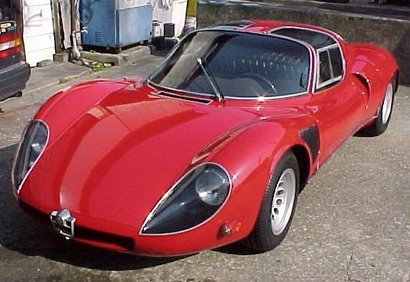
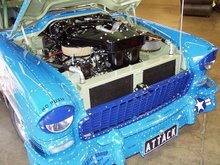
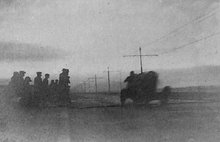

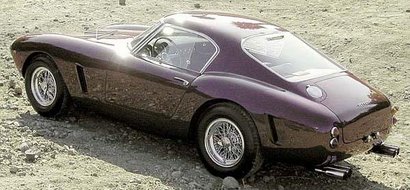
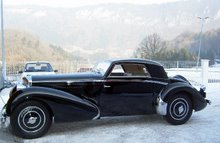
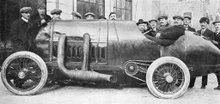


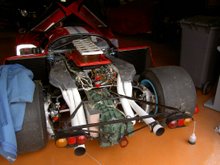

6 comments:
Paul, just to let you know that I enjoyed your engine improvement series. Not much more to say, really, but it must be a bit frustrating to put in all the work and not get any feedback ...
The cats are great, too!
Peter
Two questions paul,
Concerning the S1 alu fan.
Why would the warming-up be slowed down? There is the thermostat which basicly bypasses the radiator till the engine reaches operating temperature doesn't it?
Secondly about crankcase breathing.
The mesh inside the oilfill canister, is it there to filter the added oil? If so can't it be left out so the path for the crankcase pressure will be easier? or can the canister be bemodified to take a bigger hose to the airbox? The vacuum created in the airbox must help somewhat to suck the air out of the crankcase.
Thank you Peter
William, of course the thermostat controls the warming of the water in the engine, but all the time the fan is unnecessarily cooling the water in the radiator, which means that full warm up has to take longer - and power and of course fuel is wasted driving the fan when it isn't needed.
The mesh is an oil and flame trap. The problem is the awkward route that the "breathing" has to take. The inhalation of crankcase fumes is not good for best performance even if it is "environmentally friendly"
My early 2c has what would now be classed as unfriendly to the Environment, and doesn't have the flame trap, ( only necessary because of fumes being routed back through the engine?) but vents fumes directly underneath the engine to the atmosphere, Not having the flame trap means that I don't have the problem of steel wool circulating in the engine.
Yes Brian, that's how things were done then! I recall my father's rather worn-out Alvis TD21 Series 2; the bretahing arrangement was simple: a piece of soggy rubber tube at back of the engine that released a cloud of unpleasant fumes...
It was fine after the rebuild!
Post a Comment